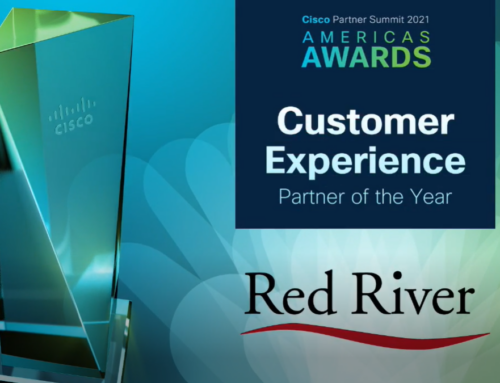
How Microsoft Enclave Simplifies CMMC Compliance
The Cybersecurity Maturity Model Certification (CMMC) is a vital requirement for organizations working with the Department of Defense (DoD). It also serves as a solid benchmark for achieving cybersecurity zero trust goals. Its purpose is to ensure that Controlled Unclassified Information (CUI) and sensitive data are well-protected. However, meeting these stringent standards can pose significant challenges for businesses.
Microsoft Enclave, built on Azure Secure Enclave, offers a robust, scalable solution to streamline compliance efforts. This article delves into the CMMC and the common challenges businesses face in achieving compliance. What tools and resources can help you achieve and maintain CMMC in 2025?
Why Does the DoD Require CMMC?
The DoD requires CMMC compliance to address increasing cybersecurity threats and safeguard sensitive information within the Defense Industrial Base (DIB).
CUI Protection
CUI is critical to national security, encompassing data that, while not classified, still requires protection from unauthorized access. CMMC ensures that organizations handling CUI implement adequate security measures to prevent breaches and data or intellectual property theft.
Increasing Cybersecurity Threats
Cyberattacks on the DIB are growing more frequent and sophisticated. Ransomware-related reporting from DIB companies in 2023 showed a 169% increase in one year. Bad actors often target smaller contractors that lack robust cybersecurity measures, using them as entry points to access sensitive DoD information. CMMC establishes a uniform standard to strengthen the entire supply chain’s defense, no matter the size of the contracting organization.
Strengthening the Supply Chain
Today, around 1,000 contractors have qualified for the DIB. With new rules issued just this year, the DoD estimates another 68,000 new contractors will join this pool. They join more than 300,000 companies in the military-industrial base and supply chain. However, the DoD’s reliance on a growing network of contractors and subcontractors marks their supply chain as a significant vulnerability. Many organizations in the DoD supply chain had inconsistent or insufficient cybersecurity practices. CMMC addresses this by creating a tiered framework that ensures all participants meet baseline security requirements.
Compliance with Federal Security Mandates
CMMC builds on existing federal requirements, such as the Defense Federal Acquisition Regulation Supplement (DFARS) and National Institute of Standards and Technology (NIST) SP 800-171. The certification formalizes and enforces compliance with these standards, ensuring contractors take cybersecurity seriously.
Mitigating Risks to National Security
The loss or compromise of sensitive DoD information can have severe national security implications. CMMC compliance helps mitigate risks by creating a structured approach to identifying, managing and securing sensitive data.
Auditable and Verified Standards
Previously, contractors self-attested their compliance with cybersecurity requirements, but this lead to enforcement gaps. CMMC 2.0 introduced a third-party audit process to verify compliance, ensuring contractors adhere to required standards and can demonstrate their efforts to achieve these cybersecurity goals.
By requiring CMMC compliance, the DoD will fortify the cybersecurity posture of its contractors, securing the critical data essential to its operations and the nation’s security. This type of proactive, measured approach is necessary for handling evolving cyber threats in an increasingly complex digital landscape.
Understanding CMMC Requirements

For businesses aiming to handle DoD contracts, CMMC compliance is increasingly non-negotiable — and difficult to achieve. CMMC consists of three levels, each with increasing maturity and security requirements. At its core, CMMC focuses on ensuring the confidentiality, integrity and availability of CUI, with specific requirements such as:
- Implementing NIST SP 800-171 practices.
- Establishing detailed security policies and controls.
- Demonstrating compliance during audits through thorough documentation.
These requirements aim to secure sensitive information, but their complexity often overwhelms businesses.
Compliance Challenges
Many organizations encounter significant hurdles when trying to align with CMMC. These include:
- Managing CUI: Businesses must implement robust security measures to protect sensitive data from unauthorized access, which can be challenging without specialized tools.
- Complex security frameworks: Compliance with NIST SP 800-171 and related standards often requires technical expertise, especially when implementing access controls and encryption.
- Cost constraints: Smaller organizations may struggle with the financial burden of achieving compliance, particularly when considering staffing and software expenses.
- Audit preparation: Gathering the necessary evidence and documentation to prove compliance can be time-consuming and resource intensive.
These challenges emphasize the need for a comprehensive, cost-effective solution like Microsoft Enclave.
What Is Microsoft Enclave?
Microsoft Enclave, a secure environment built on Azure Secure Enclave, is specifically designed to address these challenges. It provides a centralized, scalable platform that simplifies compliance with CMMC, DFARS, ITAR and FedRAMP standards.
Microsoft Enclave offers end-to-end encryption, role-based access controls and pre-configured compliance controls that align with regulatory frameworks. By utilizing this platform, businesses can achieve compliance faster and more efficiently.
Azure Enclave: Key Benefits for CMMC Compliance
Achieving CMMC compliance is difficult, but Microsoft Enclave simplifies the process by democratizing a robust set of tools and features tailored to meet even the most stringent cybersecurity regulatory requirements. From managing sensitive CUI data to reducing the time and costs associated with compliance, Microsoft Enclave provides organizations with a secure and scalable environment. Some of the standout benefits that make Enclave the ideal solution for businesses aiming to meet CMMC standards include:
- Simplified Management of CUI
Microsoft Enclave enables businesses to centralize the storage and management of CUI. This framework ensures that sensitive data remains secure and accessible only to authorized personnel. Role-based access controls (RBAC) and advanced encryption mechanisms make enforcing compliance standards and mitigating risks easier. - Pre-Built Security and Compliance Controls
Rather than building security measures from scratch, Microsoft Enclave provides pre-configured compliance controls aligned with CMMC requirements. This feature reduces the time, effort and expertise required for implementation while ensuring organizations meet their critical security benchmarks. - Cost Efficiency Even for Small Businesses
Software as a service (SaaS) is the perfect vehicle for even smaller organizations. Microsoft Enclave’s cost-effective subscription model allows businesses to leverage cutting-edge compliance tools without requiring significant upfront investments. The platform also minimizes the need for specialized compliance staff, reducing maintenance costs over time.
Practical Applications of Microsoft Enclave
Beyond CMMC compliance, Microsoft Enclave offers versatile real-world applications that enhance security, collaboration and efficiency across multiple business operations:
- Data Segmentation
The utility of Enclave in Azure extends beyond CMMC to general best practices for mitigating cybersecurity risk. For example, Microsoft Enclave lets organizations isolate sensitive workloads. CUI or other critical data can be stored and managed separately. The level of segmentation reduces the risk of unauthorized access. Should an attack occur, data segmentation minimizes exposure and risk for the entire organization. - Secure Collaboration
Microsoft Enclave enables secure collaboration for internal teams and external partners by integrating encrypted communication and file-sharing tools. Teams can work on sensitive projects involving CUI without compromising data integrity or confidentiality. Whether collaborating with subcontractors or federal agencies, organizations can share information in a controlled and secure manner that aligns with compliance standards. - Streamlined Audit Preparation
Preparing for compliance audits, such as those for CMMC or other regulatory frameworks, is a significant challenge. Microsoft Enclave automates this process by capturing compliance-related data, maintaining logs and storing relevant documentation in a centralized location. These features reduce the administrative burden of manual data collection, so organizations quickly generate audit-ready reports while saving time and staff resources. - Remote Work Empowerment
Today’s end-to-end environments support an increasingly distributed workforce. Securing access to sensitive data is essential — and more difficult. Microsoft Enclave’s cloud-based infrastructure supports remote work with encrypted connections and rigorous authentication mechanisms. These features ensure employees and authorized partners can securely access CUI from anywhere without risking compliance violations or security breaches.
In addition to these benefits, the platform’s flexibility and scalability allow organizations to adapt to changing operational needs while maintaining a high standard of security and compliance.
Preparing for CMMC Audits with Microsoft Enclave
Audit readiness is a crucial aspect of CMMC compliance. Microsoft Enclave simplifies the process by integrating features that automatically collect and organize compliance data. This capability eliminates manual processes, saving organizations valuable time and resources. Additionally, the platform’s centralized documentation repository ensures that all policies, procedures or other compliance evidence are readily available during the assessment process.
Features like automated log capture and audit readiness reports help Microsoft Enclave reduce the stress of CMMC audits, enabling businesses to effortlessly demonstrate compliance.
Get Ready for CMMC 2.0 with Red River and Microsoft Enclave
Navigating the complexities of CMMC compliance, especially with the evolving requirements under CMMC 2.0, is challenging for organizations of all sizes. Preparing your business to manage CUI securely, meet stringent cybersecurity controls and document compliance for audits requires more than just basic tools. Achieving and maintaining the rigor associated with CMMC requires a trusted partner with a robust, scalable solution.
Red River and Microsoft Enclave can help you achieve these goals. Microsoft Enclave provides a secure, pre-configured environment to simplify your compliance journey. The software streamlines data management, implements built-in security controls and offers audit-ready documentation tools. Red River, as a trusted Microsoft technology integrator, brings unparalleled expertise to help you deploy and optimize Azure Enclave to achieve CMMC.
With Red River, you gain more than just access to Microsoft Enclave. Our team of experts works closely with your organization to ensure the solution tailors to your unique compliance challenges. From initial setup to ongoing support, we help you leverage the full power of Microsoft Enclave to protect sensitive data and confidently prepare for audits.
CMMC compliance is not just a regulatory requirement but a critical step in strengthening your organization’s cybersecurity posture and securing DoD contracts. Don’t face these challenges alone—partner with Red River to simplify CMMC compliance and ensure your success with Microsoft Enclave.
Contact us today to learn how Red River and Microsoft Enclave can prepare your organization for CMMC 2.0 and beyond.
Q&A
What is a CMMC Third Party Assessor Organization (C3PAO)?
A C3PAO is an accredited entity authorized to evaluate and certify an organization’s compliance with the CMMC framework. C3PAOs are trained and approved by the CMMC Accreditation Body (CMMC-AB) to conduct formal assessments of contractors within the Defense Industrial Base (DIB). These assessments determine whether an organization meets the required cybersecurity practices and processes for their designated CMMC level. By working with a C3PAO, businesses can demonstrate compliance with CMMC standards, ensuring eligibility for Department of Defense (DoD) contracts while protecting Controlled Unclassified Information (CUI).
Can a C3PAO verify our CMMC compliance?
Yes, a C3PAO (CMMC Third Party Assessor Organization) can verify your CMMC compliance. C3PAOs are accredited and empowered by the government to conduct formal assessments of organizations seeking to meet these stringent requirements. During the assessment, the C3PAO evaluates your implementation of CMMC practices and processes to determine if you meet the necessary certification level. If your organization successfully passes the assessment, the C3PAO will submit their findings to the CMMC-AB for final approval. This verification process is essential for demonstrating compliance and maintaining Department of Defense (DoD) contract eligibility.
What is the typical C3PAO CMMC assessment process?
The typical C3PAO (CMMC Third Party Assessor Organization) assessment process is a structured evaluation designed to determine an organization’s compliance with the Cybersecurity Maturity Model Certification (CMMC) framework. Here’s an overview of the key steps typically undertaken by these third-party cybersecurity experts:
1. Pre-Assessment Preparation
Before the assessment starts, the organization should ensure its systems, policies and procedures align with the required CMMC level. This process involves implementing the security controls and practices outlined in the CMMC model, often using tools like Microsoft Enclave to simplify compliance. Organizations may conduct internal reviews or hire consultants to identify and address potential gaps.
2. Assessment Planning
Once ready, the organization engages a C3PAO accredited by the CMMC Accreditation Body (CMMC-AB). The C3PAO and the organization schedule the assessment, define its scope, including the systems and data to be evaluated and prepare all the relevant documentation, including policies, procedures and evidence of implemented controls to achieve compliance.
3. On-Site or Remote Assessment
Depending on the organization’s technical setup, the C3PAO conducts the formal evaluation, which may be on-site or remote. Assessors examine technical systems, review documentation and interview staff to verify compliance with CMMC practices and processes. The auditor will examine key areas of data management, from access controls and data protection to incident response and risk management.
4. Findings and Remediation
Following the assessment, the C3PAO provides a report detailing current compliance levels and any identified gaps between requirements and practices. Organizations typically address deficiencies and undergo a follow-up review to confirm their remediation.
5. Certification Submission
If the organization meets the CMMC requirements, the C3PAO submits its findings to the CMMC-AB, which issues the final certification.
This methodical process can ensure your organization meets the cybersecurity standards necessary to handle Controlled Unclassified Information (CUI) and qualify for Department of Defense (DoD) contracts.

written by
Corrin Jones
Corrin Jones is the Director of Digital Demand Generation. With over ten years of experience, she specializes in creating content and executing campaigns to drive growth and revenue. Connect with Corrin on LinkedIn.




